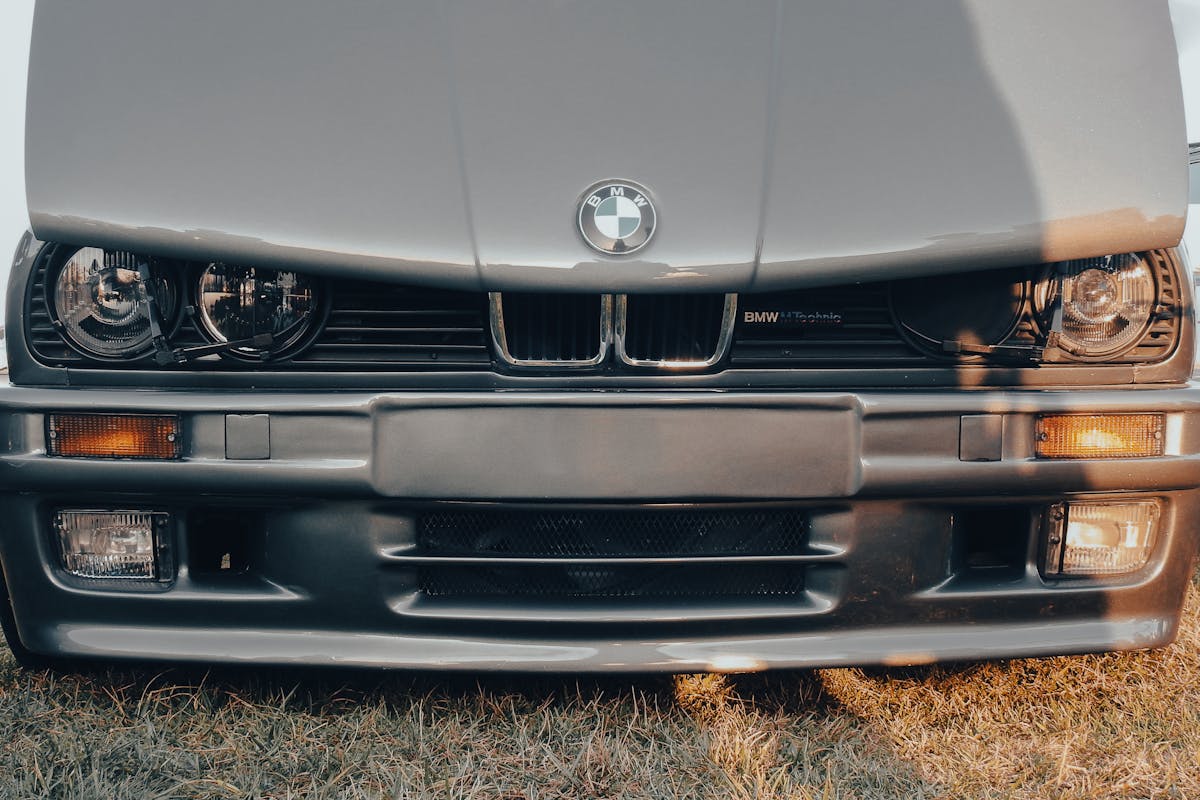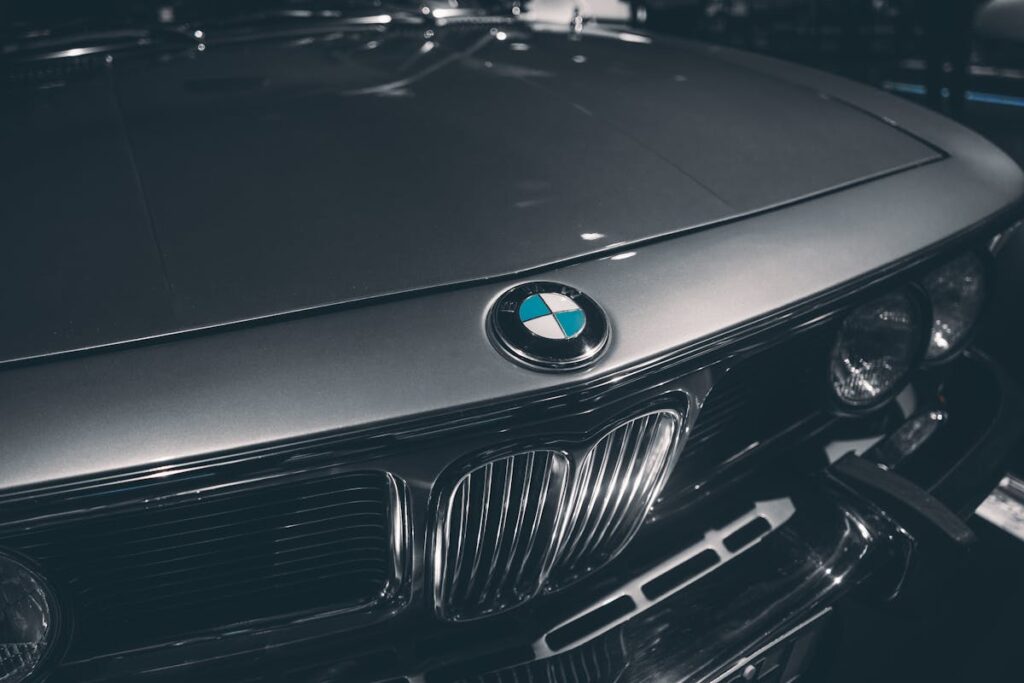Determining the true value of a classic BMW requires more than just a cursory glance at its physical condition. A professional and methodical approach, encompassing factors such as historical significance, condition, original features, and market demand, is key. By applying professional appraisal methods, utilizing online valuation tools, and maneuvering through the often complex territory of provenance, one can arrive at an accurate valuation. However, understanding the intricacies of this process and the potential pitfalls can be a challenging endeavor. What are the key elements to take into account, and how can we guarantee an accurate and fair valuation?
Understanding Classic Car Valuations
In the sphere of classic cars, valuations are much more than a simple numbers game. They involve a profound understanding of the car’s history, its rarity, condition, and the fluctuating market demand. Classic car auctions often serve as a reliable barometer for these valuations, providing real-time data on how much buyers are willing to pay for a particular make and model.
Among the common valuation methods, the comparative sales approach is widely used. This involves comparing the sale prices of similar vehicles at classic car auctions. Another method is the cost approach, where the value is determined based on the cost to replace the car with a similar one in the same condition.
However, these methods should not be used in isolation. Other factors such as the car’s provenance, its originality and the completeness of its documentation can greatly influence its value. For instance, a classic BMW with a verifiable racing history might fetch a higher price than a similar model without such a pedigree.
Understanding these valuation principles is pivotal for anyone looking to invest in the classic car market. They not only help in making an informed purchase but also in ensuring the investment yields a substantial return.
Importance of BMW’s Historical Impact
BMW’s historical impact on the automotive industry is an essential factor in the valuation of its classic cars. The brand’s innovative design legacy and the significant moments in its history have heavily influenced the evolution of modern automobiles. Consequently, a thorough understanding of these factors is vital to accurately assess the worth of classic BMWs.
BMW’s Innovative Design Legacy
When it comes to automotive design innovation, few can rival the legacy of BMW. This legacy is anchored by a unique design philosophy that blends aesthetic evolution with engineering excellence, resulting in iconic models with a timeless appeal.
BMW’s design philosophy is characterized by a commitment to form and function. Its aesthetic evolution, from the streamlined elegance of the 328 Roadster to the bold, aggressive lines of the M series, reflects a constant pursuit of balance between beauty and performance.
BMW’s commitment to engineering excellence is evident in its technological advancements. From pioneering developments in engine technology to the introduction of intelligent driver assistance systems, BMW has consistently been at the forefront of automotive innovation.
The brand’s iconic models have not only demonstrated technological prowess but also cultural significance. They have shaped BMW’s brand identity and left an indelible mark on the automotive landscape. This has been achieved through:
- The creation of designs that are instantly recognizable and have a timeless appeal.
- The introduction of models that have redefined automotive design standards.
- The ability to innovate and adapt to changing consumer preferences and technological trends.
Pivotal Moments in BMW History
Highlighting pivotal moments in BMW’s history reveals a narrative marked by resilience, innovation, and sheer determination. Key BMW milestones include the release of iconic models such as the New Class and the M-series, which have greatly solidified BMW’s market positioning as a manufacturer of high-performance luxury vehicles.
BMW’s racing heritage, dating back to the 1930s, has notably influenced their design evolution, yielding automotive innovations that contribute to their brand loyalty. As a proof of their engineering breakthroughs, BMW was the first to introduce turbocharged engines in Formula 1 races, a legacy still evident in their modern models.
BMW’s cultural significance extends beyond the automotive industry. Their commitment to aesthetics and functionality resonates through restoration trends, with classic BMWs often restored to their original glory, further enhancing their value.
BMW’s journey, marked by economic downturns and wars, is a proof of their resilience. Their ability to consistently reinvent themselves without compromising their identity is a proof of their sheer determination. Through all these, BMW has not only survived but thrived, becoming a symbol of excellence in automotive engineering.
Influence on Modern Automobiles
Having looked at the resilience and innovation that has marked BMW’s history, we can now turn our attention to the profound influence this automaker has had on the modern automobile industry. BMW’s legacy has not been limited to the production of high-performance vehicles and luxury cars. Instead, it extends to shaping modern engineering and influencing the design philosophy of contemporary automobiles.
BMW’s influence can be neatly captured in three key points:
- Pioneering Engine Technologies: BMW’s innovation in engine design, including the development of the inline-six engine and efficientDynamics technology, has set new standards for power, performance, and fuel efficiency.
- Advancements in Car Safety: BMW was one of the first automakers to incorporate advanced safety features such as anti-lock braking system (ABS) and dynamic stability control (DSC), making a significant contribution to the safety standards of modern vehicles.
- Design Philosophy: BMW’s design philosophy, characterized by the iconic kidney grille and the Hofmeister kink, has influenced the aesthetic sensibilities of the automotive world.
BMW’s historical impact therefore remains deeply embedded in the fabric of the modern automobile industry, serving as a symbol of its enduring value and relevance.
Decoding BMW Model Numbers
Diving straight into the heart of the matter, the decoding of BMW model numbers can seem like deciphering an enigmatic code for the uninitiated. Yet, with a little knowledge, this task becomes manageable and can provide insightful model identification clues.
These numbers carry historical significance, offering insights into the vehicle’s generation, body style, and engine size. The first number indicates the series or model, an essential element in positioning the vehicle within BMW’s extensive line-up. The next two digits usually represent the engine size, a vital factor in evaluating performance capability and fuel efficiency. Additionally, letters after the numerals provide further details – ‘i’ for fuel injection, ‘d’ for diesel, ‘x’ for BMW’s xDrive all-wheel-drive system, and so on.
Decoding these numbers can reveal much about the vehicle’s identity and lineage. It can aid in estimating a classic BMW’s value, especially when combined with other factors like condition, originality, and historical interest. Understanding this nomenclature is not just a matter of model identification; it is an integral part of appreciating the BMW marque’s heritage and legacy.

Evaluating Condition and Originality
In the domain of classic cars, the condition and originality of a vehicle play pivotal roles in its valuation. This involves the scrutiny of several distinct factors, including the interior condition, exterior finish, mechanical integrity, and originality verification.
The interior condition refers to the preservation and restoration quality of the vehicle’s cabin. A well-maintained interior, with original or high-quality restored materials, increases the value. Exterior finish, on the other hand, relates to the paint originality and overall finish of the car. An authentic, well-preserved exterior finish, free from notable customization effects, enhances the vehicle’s valuation.
Mechanical integrity refers to the car’s functionality and performance, which are often evident in its maintenance history. A well-documented maintenance history showcasing regular service and repairs, along with low mileage, can considerably boost the car’s value.
- Originality Verification: This involves evaluating the car’s documentation importance, including proof of original parts and verification of any restoration work.
- Restoration Quality: High-quality restoration work can greatly increase a car’s value, especially if the work has maintained the car’s original character.
- Mileage Impact: Lower mileage often indicates less wear and tear, potentially increasing a classic BMW’s value.
Understanding these aspects will guide you towards an accurate valuation of a classic BMW.
Influence of Market Trends on Value
The valuation of classic BMWs is not immune to market trends and fluctuations, which often play a significant role in pricing. An understanding of these trends is essential, as they can greatly impact the overall value of these vehicles. In the following section, we will examine the effect of market trends on classic BMW pricing and the importance of tracking these fluctuations for a thorough valuation.
Analyzing Market Fluctuations
Market volatility often plays a pivotal role in the valuation of classic BMWs. This volatility is a direct result of several factors, including market demand, economic indicators, and collector preferences.
Market demand is inherently tied to buyer demographics and their investment potential. As the global economy expands, the demand for classic BMWs has seen a surge, especially from emerging markets. Economic indicators also greatly impact the valuation. A robust economy often leads to higher disposable income, which in turn drives up the prices of luxury items such as classic cars.
Collector preferences, auction results, and historical sales data are also central to the valuation process. These factors provide context for the market, highlighting the most sought-after models and their price trends.
Factors such as seasonal trends, global influences, and regional variations come into play as well. To highlight:
- Seasonal trends lead to fluctuations in the demand for convertibles and coupes.
- Global influences include factors such as international events and changes in import-export policies.
- Regional variations refer to the differing preferences and buying power of consumers across various geographical locations.
All these aspects intertwine to create a dynamic market environment, directly influencing classic BMW valuations.
Impact on BMW Pricing
Understanding the impact of market trends on the value of classic BMWs requires a thorough examination of the broader market dynamics. Factors such as market demand, collector preferences, and vintage rarity greatly influence the pricing of these vehicles. High demand, combined with the scarcity of vintage models, often drives up the value.
Collector preferences play an essential role too. If a particular model or era of BMW becomes popular among collectors, the value of those vehicles can skyrocket. Restoration quality also impacts pricing. A well-restored classic BMW that retains its original parts and details can command a premium price.
Brand loyalty is another factor that can affect classic BMW pricing. BMW has a dedicated fanbase that appreciates the brand’s history and craftsmanship, which can increase the value of vintage models. Economic factors, such as inflation and consumer spending power, also influence pricing.
Auction sales and regional trends provide useful data for gauging the market value of classic BMWs. High auction sales indicate strong demand, while regional trends can reveal location-specific preferences. However, understanding these elements and their interplay can help accurately assess a classic BMW’s value.
The Role of Provenance in Valuation
In the domain of classic BMW valuation, provenance plays an instrumental role. Just as with fine art or rare collectibles, the value of a classic BMW can be considerably influenced by its ownership history and the importance of its documentation.
The provenance of a classic BMW involves a detailed record of its past, fundamentally providing a story that unfolds its journey from the time of manufacture to the present. This story can greatly influence its perceived value, especially for collectors and enthusiasts.
- Ownership History: The chain of ownership can either elevate or diminish the car’s value. For example, a BMW once owned by a notable personality or used in a considerable event often holds a higher value.
- Documentation Significance: Thorough documentation, including service records, original purchase papers, and restoration details, add to the car’s authenticity, thereby increasing its value.
- Originality: A classic BMW that retains its original parts, paint, and interior features is generally more valuable than one that has been modified or restored with non-original components.
Professional Appraisals and Online Tools
While the provenance of a classic BMW can provide a rich tapestry of its history and value, there is an undeniable role that professional appraisals and online tools play in this field. Professional appraisals are an essential component of the valuation process, as they provide a thorough analysis of a vehicle’s worth based on a set of established valuation criteria.
These criteria often include factors such as the vehicle’s condition, rarity, and historical significance. Appraisers use a variety of different appraisal methods to arrive at their valuation, including comparing similar vehicles that have recently sold, and analyzing the cost of restoring the vehicle to its original condition.
Online tools, on the other hand, offer a more accessible and instant form of valuation. These tools use algorithms that draw on vast databases of sales data and market trends to provide an estimated value. While they may not provide the same level of detail as a professional appraisal, online tools can serve as a useful starting point when determining a classic BMW’s worth.
Buying and Selling Tips for Classic BMWs
Maneuvering the marketplace for classic BMWs can be a thrilling journey, replete with its own set of unique challenges and rewards. It is a dynamic field where negotiation strategies, auction tactics, and an understanding of restoration costs can make a significant difference.
To optimize your buying and selling experience, it is essential to utilize buyer resources and comprehend seller responsibilities. Extensive market research and accurate price comparisons are indispensable. These elements combined will help you gauge the investment potential of a classic BMW.
Here are three key steps to reflect on:
- Market Research: Stay updated on current market trends. This includes fluctuations in the value of classic BMWs, which can be influenced by factors such as rarity, condition, and historical significance.
- Price Comparisons: Verify the asking price against other similar models listed for sale. This will provide a realistic expectation of the car’s value.
- Negotiation and Auction Tactics: Patience and understanding of the market are essential. Be prepared to negotiate based on your research and knowledge of restoration costs.
Frequently Asked Questions
What Are the Insurance Considerations for a Classic BMW?
Insurance considerations for a classic BMW involve understanding the specifics of insurance coverage. Specialized classic car policies often offer agreed value, extensive collision, and spare parts coverage, tailored to preserve the vehicle’s unique value.
How Does a BMWS Mileage Affect Its Classic Car Valuation?
The mileage of a BMW considerably impacts its classic car valuation. Lower mileage generally implies less wear and tear, preserving the vehicle’s original features, which enhances its value. It’s a key valuation factor for collectors and enthusiasts.
Are There Maintenance Tips Specific to Classic BMWS?
Indeed, maintenance of classic BMWs can involve specific actions like engine upgrades for better performance and sourcing original parts to preserve authenticity. Consistent care can enhance the longevity and value of these vintage vehicles.
What Is the Process for Importing Classic BMWS From Overseas?
Importing classic BMWs involves understanding customs regulations of the exporting and importing countries, and managing shipping logistics. It includes paperwork, taxes, inspections, quarantine requirements, and arranging safe transportation to guarantee the vehicle’s condition.
Are There Specific Restoration Specialists Recommended for Classic BMWS?
Yes, restoration of classic BMWs is best handled by specialist services who understand their unique characteristics. Restoration costs can vary widely, hence choosing a reputable specialist is essential for maintaining the car’s value and integrity.

